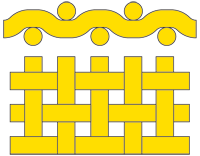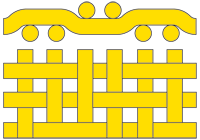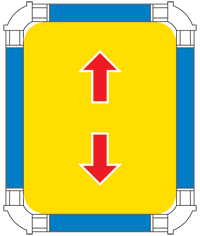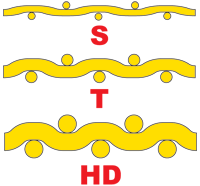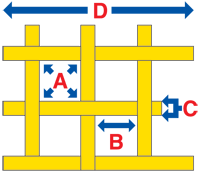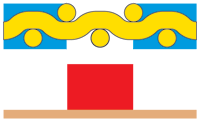Company Blog
Products for Filtration, Separation, Sifting and Printing
More information for the Screen Printer
- Font size: Larger Smaller
- Hits: 8216
- Subscribe to this entry
- Bookmark
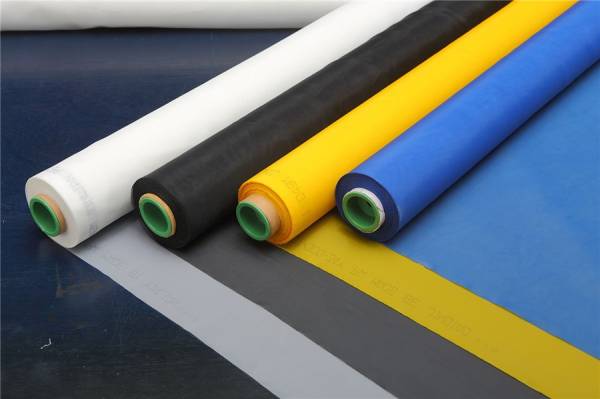
There are quite a few types of mesh fabrics available and they can be made from many types of substrates. There are multifilament and monofilament threads, stainless steel, nylon, polyester, and silk.
This article is limited to monofilament polyester printing mesh, the best and cheapest choice for screen printing garments. You have for example many choices in thread weave available. The plain weaves (Fig. 1) and the twill weaves. (Fig.2) Twill weaves can provide higher ink volume when used in higher meshes but the ability to hold sharp edges with a coated emulsion is diminished.(Fig. 3) Almost all applications will be best served with a plain weave.
|
There are two directions to the threads or yarns in mesh due to the mode of manufacture. The length (or feed from the machine) is called WARP. The thread direction that spans the width of the roll is called WEFT. Mesh fabric is flexible and will return to the unflexed position. This fabric property is called elastic memory. Mesh fabric has a flex limit referred to as the yield point. Mesh tensioned beyond this stable point will no longer be able to hold tension or return to the unflexed position (loss of elastic memory). Mesh threads have a breaking point called the tensile strength. Screens are best stretched with the warp and weft directly horizontal and vertical, with the warp running the direction of the squeegee stroke. The warp threads will be able to hold 5 to 15% more tension (Fig. 4) Mesh fabric is available in a calendered form. Calendered mesh is a product with one or both sides flattened at their highest point in the weave to reduce fabric thickness and create a level profile. (Fig. 5) Calendered mesh has reduced open area in the diameter thread available and is unneeded for typical textile printing. Monofilament polyester mesh is available in white and dyed. White mesh will refract light past the stencil edge while exposing, and will transmit the light along the white threads in the same way fiber optic threads will, the light transmission causes undercutting of the stencil. (Fig. 6). Dyed mesh will reduce the refraction and light travel because dyed mesh reduces the travel of ultraviolet light. Exposure times for dyed mesh will be 50 to 100% longer. Dyed mesh is the best choice for detail and stencil sharpness. (Fig. 7) Monofilament polyester mesh is available in several thread diameters and mesh opening choices for each mesh thread count. Standard monofilament polyester is joined by the low-elongation (LE) mesh fabrics. Low elongation mesh provides higher tension levels and has the ability to maintain stable tension for longer print use. The older standard method of ordering mesh uses letter designations for the three available thread diameters, S for small, T for medium, and HD for Large. (Fig. 8) S for small. S diameter meshes have a lower maximum tension, loose tension rapidly and are easily damaged. The sacrifice in strength will gain a higher resolution and detail. S meshes create more ink flow due to the larger open areas in the mesh. S meshes will produce a thinner stencil, printing a thinner ink deposit and giving a softer hand. T for medium. T mesh is the most commonly used textile printing diameter range and is the best choice for most situations. HD for large or heavy duty. HD mesh has the highest tensile strength and will hold tension the longest. The large diameter mesh will create a thick ink deposit. Large threads reduce ink flow due to the small open areas. Printing with HD mesh can be difficult. Mesh opening is dependent on the fabric thread diameter (Fig. 9-C) and the relation to the mesh count (threads per inch/centimeter Fig. 9-D). The thicker the thread the less open area (open area measured in percentage Fig. 9-A) for ink travel. When ordering a screen or mesh fabric for your retensionables it would be best to specify not just S, T, or HD but the exact diameter you desire. An example: not just 156 T yellow mesh but rather find the mid range plain weave (64 micron) and ask for the 156 yellow mesh in the 64 micron thread diameter in plain weave. An advertised sale of 260 white mesh screens could be 2 over 1 twill mesh weave with the thickest thread diameter available in that mesh. One fabric brand, used as an example, has available 8 variations in 230 mesh. In this fabric, there are choices in dyed and white, two different weaves, and three different thread diameters. This mesh count had an open area ranging from 13 to 38%. Consistency problems with halftones on 230 mesh would be dramatic with a mix of mesh fabric. The majority of the stencil gasket formed by mesh and coated emulsion is the thickness of the mesh itself. Theoretical ink volume (TIV) is the representation of your printable ink volume. TIV is dependent on the mesh count, thickness, open area, and thread diameter. (Fig. 10) Mesh properties are quite important to printing ink volume and print quality. Stay consistent and you will be able to predict your results with greater accuracy. Your goal should be consistency, predictability, and repeatability. |
Fig.1 |
|
Fig.2 |
|
|
Fig3 |
|
|
Fig.4 |
|
|
Fig.5 |
|
|
Fig.6 |
|
|
Fig.7 |
|
|
Fig.8 |
|
|
Fig.9 |
|
|
Fig.10 |
Last modified on



